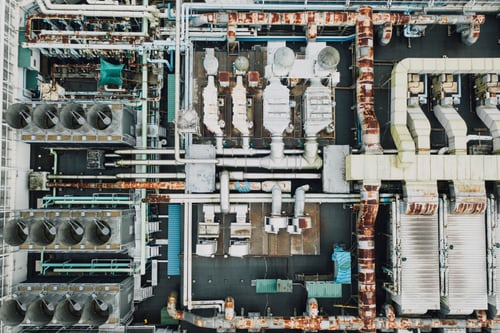How Will AI Impact Machine Design?
In tis article, explore some of the ways that AI will impact machine design.
Join the DZone community and get the full member experience.
Join For Free
Artificial intelligence is a reality today. In most cases, we’re finding that robust and adaptive computing complements human expertise rather than replaces it outright. The task of engineering and designing new and more useful machines is one such case.
Artificial intelligence and machine learning are changing how we design machines and products, making our industrial equipment more precise and efficient, and providing ways for engineers to optimize and automate their workflows. Here’s how.
You might also like:
Generative Design With AI
One especially exciting application of AI in machine (and general product) design is generative design. This is where artificial intelligence designs new products according to a set of user-specified criteria or intelligently refines existing products for added stability, durability, or efficiency.
A product designer could specify the maximum amount of raw material to be used in the final design or its minimum strength tolerances, for example. The algorithm then finds multiple efficient and workable designs that satisfy those criteria.
Applications for generative design abound already, including in designing automotive body and engine parts for improved fuel efficiency extending service lifetimes. With generative design included in the workflow, one company used intelligent design to reduce the weight of an essential part while improving its heat-management properties.
AI and the Circular Economy
The worldwide AI market is expected to be worth $59 billion by the year 2025. A big reason for this growth is that significant parts of the economy are being rethought and restructured from top to bottom with leanness and intelligence at the core.
Every industry has to become more energy-efficient, less wasteful of materials, and more cautious and economical about manufacturing new products. Customers demand these things, and so does the worldwide call for good environmental stewardship.
This is at the heart of the “circular economy,” which McKinsey describes as one where “growth is gradually decoupled from the consumption of finite resources.” Their research found that achieving widespread adoption of circular economy principles in Europe could help the economy recover €1.8 trillion, or nearly $2 trillion, in value by 2030.
With big data at its disposal, AI-led product and machine design can help companies realize significant financial and other benefits:
Big data allows companies to gather the insights their AI tools require to make smarter design iterations over time.
Incorporating user and aftermarket data sets in intelligent product design helps make industrial machines and sophisticated consumer-level goods more user-serviceable, longer-lasting, or easier to refurbish and resell. It means fewer electronics and other physical waste going to the landfill before its time.
Industrial equipment and enterprise planning platforms benefit from data gathered from vendors, customers, and the wider industry to make more strategic decisions about how to allocate assets and when and what to manufacture to meet demand.
Self-Aware Industrial Machines
Artificial intelligence makes self-monitoring machines a reality. The very means of production, like industrial conveyor belts, automated guided vehicles, and robotic arms and other implements, are being redesigned from the ground up with data collection and intelligence built right in.
The lynchpin is the quality and affordability of modern sensors. Sensors are how production equipment and autonomous vehicles gather information and form a picture of what’s going on around them. This has enormous implications in improving the safety of industrial equipment and robots and the capabilities of robots.
One of the most important involves turning machine vision to the task of inspecting parts for quality and safety.
Another is that machine learning helps spot predictors of future failure better than humans can alone. Sensor data finds and flags things like temperature fluctuations, unusual vibrations, and the presence of contaminants at any time while a machine is in operation. This calls attention to maintenance items before they become equipment failures or product defects.
Improved Cobots
Along with sensor-driven self-aware manufacturing equipment, artificial intelligence also helps make cobots safer and more useful workers alongside their human counterparts.
Improvements in artificial intelligence make it possible for robotic systems to work safely alongside humans in dangerous tasks while absorbing the majority of the physical risk. Welding heavy components are just one example — the welding industry is one expected to experience job shortages through and beyond 2022, making it a prime target for this technology.
Deploying intelligent machines here is a way to shift existing talent into higher-complexity and higher-paying work, or safer but more delicate work, while at a potentially impressive cost and material savings.
This also applies to distribution and manufacturing facilities that require safe and efficient movement of heavy loads of materials or a high degree of accuracy in customer fulfillment. The race for patent-worthy designs for automated order pickers and stowing robots continues at full steam as well and shows what’s possible in warehousing and supply chain environments.
Intelligently Designed Infrastructure
Artificial intelligence is making both our physical infrastructure and the machines that built it more capable of “independent thought” in the design, build, and maintenance phases. The Netherlands is home to a more than 40-foot-long bridge that was designed using machine intelligence and, as the designers put it, “printed in midair” by self-directing 3D-printing robots.
AI is not only an ally in the design of this bridge but also in the maintenance of it. The designers intend to incorporate sensors into the structure of the bridge to proactively monitor how it performs and how and whether its physical health fluctuates.
Exciting Times Ahead
These are exciting times for product designers, civil engineers, robotics specialists, machinists, and enterprise strategists alike.
Artificial intelligence is already changing how we monitor the machines we rely on, dramatically boosting the self-awareness and efficiency of those machines, and helping us find new products and new solutions to talent shortages.
Further Reading
Opinions expressed by DZone contributors are their own.

Comments